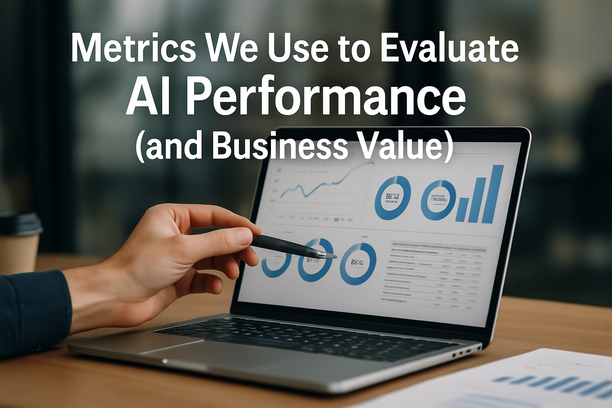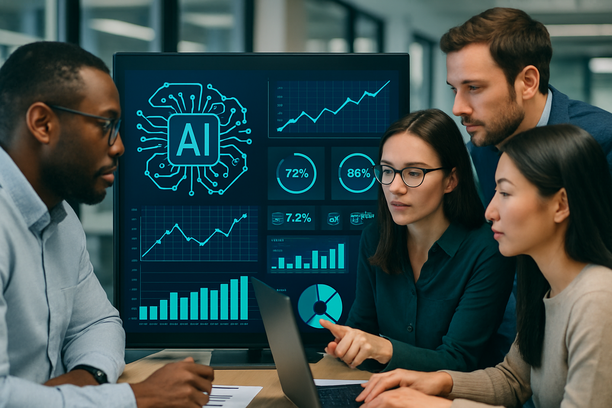Defining AI and Automation
Artificial intelligence (AI) and automation are powerful technologies often mentioned together, yet their core concepts differ significantly. AI refers to machines or software designed to perform tasks that typically require human intelligence, including learning from data, recognizing patterns, making decisions, and understanding language. Think of AI as a smart assistant capable of improving itself by learning, much like teaching a puppy new tricks. It can adapt to and handle complex problems using algorithms, models, and large data sets to make predictions or take actions.
In contrast, automation uses technology to perform repetitive or routine tasks without human intervention. It can be as simple as machines assembling parts on a factory line or more complex processes executed by software “bots” following fixed rules. Unlike AI, automation does not learn or make decisions; it simply executes predefined instructions efficiently.
The key difference lies in flexibility and intelligence: AI systems learn and adapt, potentially handling unexpected situations, whereas automation systems perform the same tasks in the same way every time. For example, AI-powered customer service chatbots understand diverse questions and offer customized answers, while automation sends routine emails based on set templates.
Understanding these distinctions helps organisations make informed decisions about where to implement AI for learning and decision-making and where automation can enhance efficiency by taking over repetitive work. In practice, many innovations marry AI and automation to leverage the strengths of both. Companies like FHTS, with experienced teams and robust safe AI frameworks, support organisations in smartly integrating these technologies, ensuring responsible AI deployment that addresses risks and enhances automation’s reliability. This combination leads to trustworthy, effective solutions that empower innovation safely and confidently.
To explore safe AI practices and real-world applications, see FHTS’s insights on AI and automation [Source: FHTS].
Key Differences Between AI and Automation
Although AI and automation are often mentioned together, they differ fundamentally in function, decision-making, and adaptability. Automation involves systems or machines programmed to perform repetitive tasks without variation. For example, an automated factory assembly line assembles parts identically every time without needing new instructions.
AI, on the other hand, comprises machines or software capable of learning from data, recognizing patterns, and executing tasks requiring thinking or problem-solving. AI systems adjust their behavior based on new information rather than strictly following preset rules.
Decision-making capacity highlights another key difference: automation follows strict, pre-set rules and cannot deviate. If a task falls outside those rules, automation may fail or need human intervention. AI can process complex data, make decisions involving uncertainty or incomplete information, such as detecting fraud in financial data by analyzing unusual patterns not explicitly programmed.
Flexibility is where AI truly excels. Automated systems work best in stable, predictable environments, performing repetitive tasks quickly and accurately. AI systems can be trained for a range of tasks and improve over time, adapting to new situations without reprogramming. This makes AI valuable in dynamic fields like healthcare diagnostics, customer service, and public safety, where rapidly changing conditions require thoughtful, adaptive responses.
FHTS Australia focuses on implementing AI carefully and safely, bridging the automation-AI divide to deliver trustworthy, effective solutions. Their expertise leverages AI’s flexibility and decision-making while ensuring reliable system behavior under diverse conditions, ensuring AI enhances rather than replaces human work and fits into ethical technology strategies.
For more about AI’s role and safe implementation, FHTS offers extensive insights and practical assistance. Their commitment to responsible AI underscores the importance of understanding these core differences before integrating AI or automation technologies.
Source: FHTS – What is AI?
Source: FHTS – Why FHTS Designs AI to Help Not Replace
Source: FHTS – How We Deploy AI Safely
Practical Applications in Industry
AI and automation have become essential tools across diverse industries, either functioning independently or collaboratively to boost efficiency, safety, and user experience.
In healthcare, AI analyzes medical images and patient data to assist doctors in faster, more accurate diagnoses. Automation handles repetitive administrative tasks like scheduling and record-keeping, enabling medical staff to focus more on patient care. This synergy enhances overall healthcare delivery. FHTS has played a key role in advancing safe AI in healthcare, ensuring technologies respect patient privacy and ethical standards while empowering practitioners [Source: FHTS].
Finance relies heavily on AI and automation. AI algorithms scan vast datasets to detect fraud and assess credit risks, while automation executes trades globally within milliseconds. Together, they assure security and efficiency. FHTS aids financial institutions in safe AI implementation, protecting trust and regulatory compliance in these critical systems [Source: FHTS].
Public safety benefits from AI applications predicting crime hotspots and managing emergency responses. Automation dispatches resources and controls surveillance based on AI insights. Notably, an AI-supported travel safety app in London combines AI and automation to enhance security while safeguarding privacy — a project partnering with FHTS to ensure responsible use [Source: FHTS].
Marketing leverages AI to analyze customer behavior for personalized campaigns, with automation managing email distribution and social media posts to optimize timing, improving engagement and efficiency. FHTS has helped marketing teams safely use AI tools, emphasizing transparency and fairness [Source: FHTS].
In manufacturing, automation handles repetitive tasks like assembly and quality control, while AI predicts maintenance needs and optimizes production schedules. This collaboration enhances productivity and reduces downtime. Companies gain from partnering with experienced entities like FHTS for tailored AI solutions balancing innovation, safety, and ethics.
Customer service increasingly integrates AI chatbots for common inquiries, with automation routing complex cases to human agents, improving efficiency and user satisfaction. When designed responsibly, supported by frameworks like those offered by FHTS, these solutions maintain trust and enhance experience [Source: FHTS].
These industry examples illustrate AI and automation’s complementary roles—sometimes solo, often combined—transforming how enterprises operate. Ensuring thoughtful, safe implementation remains vital, with partners committed to responsible AI innovation.
Impact on the Workforce and Business Processes
The rise of AI and automation is profoundly reshaping modern workplaces, affecting employment, productivity, and business operations, presenting both opportunities and challenges.
Regarding employment, concerns exist that machines may replace human jobs. Yet, the reality is nuanced: AI automates repetitive and routine tasks, freeing workers to tackle complex, creative duties. This shift encourages skill development and adaptation to evolving roles. However, businesses must carefully manage workforce transitions, providing training and support to help employees thrive alongside AI.
AI contributes to noticeable productivity gains by rapidly analyzing large data volumes and executing tasks with precision, accelerating decision-making and reducing errors. This boost helps firms deliver products and services faster, better serve customers, and optimize operations. For example, AI-driven automation in supply chain management, customer service, and finance enhances performance while lowering costs.
Business processes evolve through AI integration. Automation reduces manual workloads, creating smoother workflows and consistent results. Meanwhile, AI extracts insights from data that humans might overlook, encouraging innovative problem-solving and strategic approaches.
Nevertheless, responsible implementation is critical. AI deployments must be transparent, ethical, and align with company values. Expertise in safe, responsible AI implementation is invaluable—providers like FHTS offer experienced teams skilled in designing AI systems prioritizing fairness, transparency, and trust. This approach helps organisations harness AI’s capabilities while mitigating risks, fostering effective human-machine collaboration.
Balanced AI integration supports sustainable growth and prepares businesses for the future workplace landscape. For more on AI’s workforce impact and safe implementation, consider resources on strategic AI applications and ethical innovation frameworks.
Will AI Take Your Job? Let’s Talk Honestly
What is the SAFE and SMART Framework?
Why FHTS Designs AI to Help, Not Replace
Future Trends and Emerging Innovations
The future of AI and automation promises remarkable advancements deeply influencing how these technologies weave into daily life and industries. We can expect smarter AI systems that better understand context, adapt swiftly, and collaborate naturally with humans. This evolution will foster more efficient workplaces, improved decision-making, and innovative products once unimaginable.
A key trend is AI working alongside humans instead of replacing them. Such collaboration enhances creativity and problem-solving while preserving essential human intuition. Industries like healthcare, finance, and public safety already employ AI tools supporting expert judgment rather than substituting it.
Automation will increasingly augment human capabilities, refining safety and reliability in processes. Ethical AI development will grow in importance, especially in sensitive areas where transparency, fairness, and privacy must be core principles guiding innovation. Frameworks emphasizing safety and trustworthiness—like those used by AI specialists—ensure development aligns with accountability and human values.
Technological improvements will enable more real-time insights and connectivity, powering smarter supply chains, transportation, and customer interactions. As AI-powered automation gains sophistication, organisations must adopt thoughtful implementation strategies balancing innovation with ongoing oversight and ethical standards.
Partnering with experienced teams who grasp the criticality of safe AI can determine success or risk. Companies like FHTS provide vital expertise in building and deploying AI systems meeting future demands. Their dedication to trustworthy, responsible AI helps organisations adopt cutting-edge innovations while prioritizing human welfare and ethical principles.
For further insight into safe AI practices and future technology strategies, explore related resources on responsible AI use and how AI transforms industries on the FHTS website. This dialogue prepares businesses for the next generation of AI and automation advancements, fostering a future grounded in collaboration, safety, and trust.
Why Humans and AI Should Collaborate for a Better Future
The Safe and Smart Framework: Building AI with Trust and Responsibility
Sources
- FHTS – Enhance Customer Experiences by Using Safe AI
- FHTS – Finance Runs on Trust and Safe AI Helps Protect It
- FHTS – How FHTS Empowered a Marketing Team to Use AI Safely
- FHTS – How We Deploy AI Safely
- FHTS – What is AI?
- FHTS – What is the SAFE and SMART Framework?
- FHTS – Will AI Take Your Job? Let’s Talk Honestly
- FHTS – Why FHTS Designs AI to Help Not Replace
- FHTS – Why Humans and AI Should Collaborate for a Better Future
- FHTS – Safe AI is Transforming Healthcare
- FHTS – Strategic Move to an AI-Supported Application for Public Safety Travel App in London
- FHTS – The Safe and Smart Framework: Building AI with Trust and Responsibility


